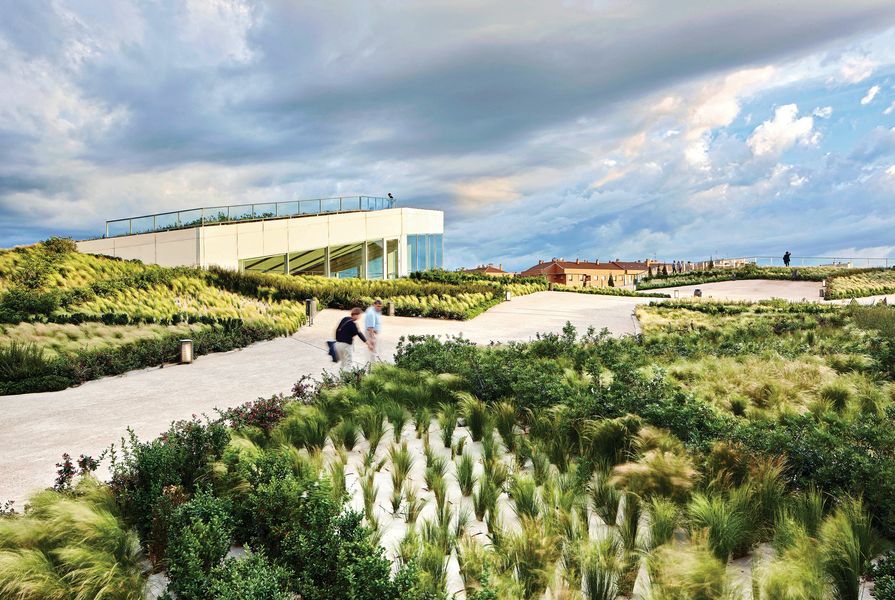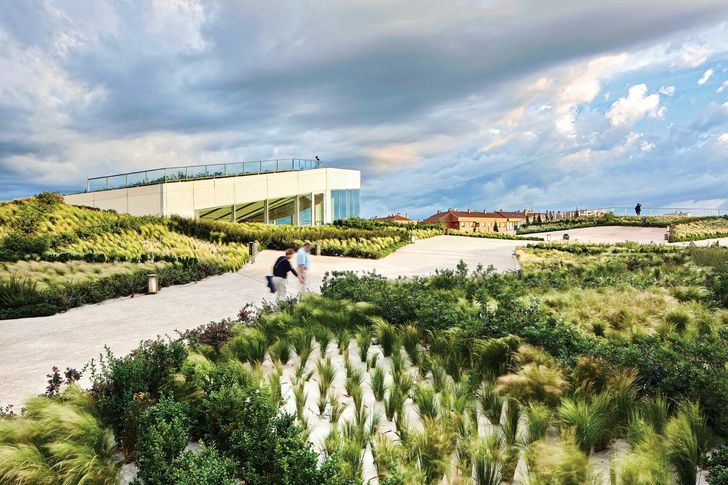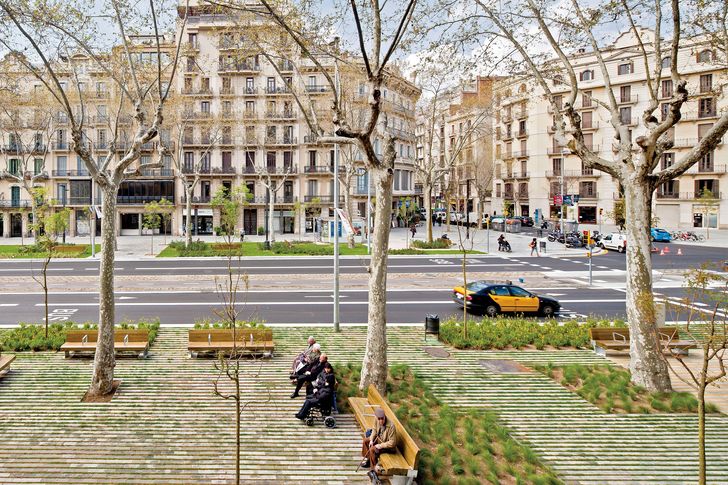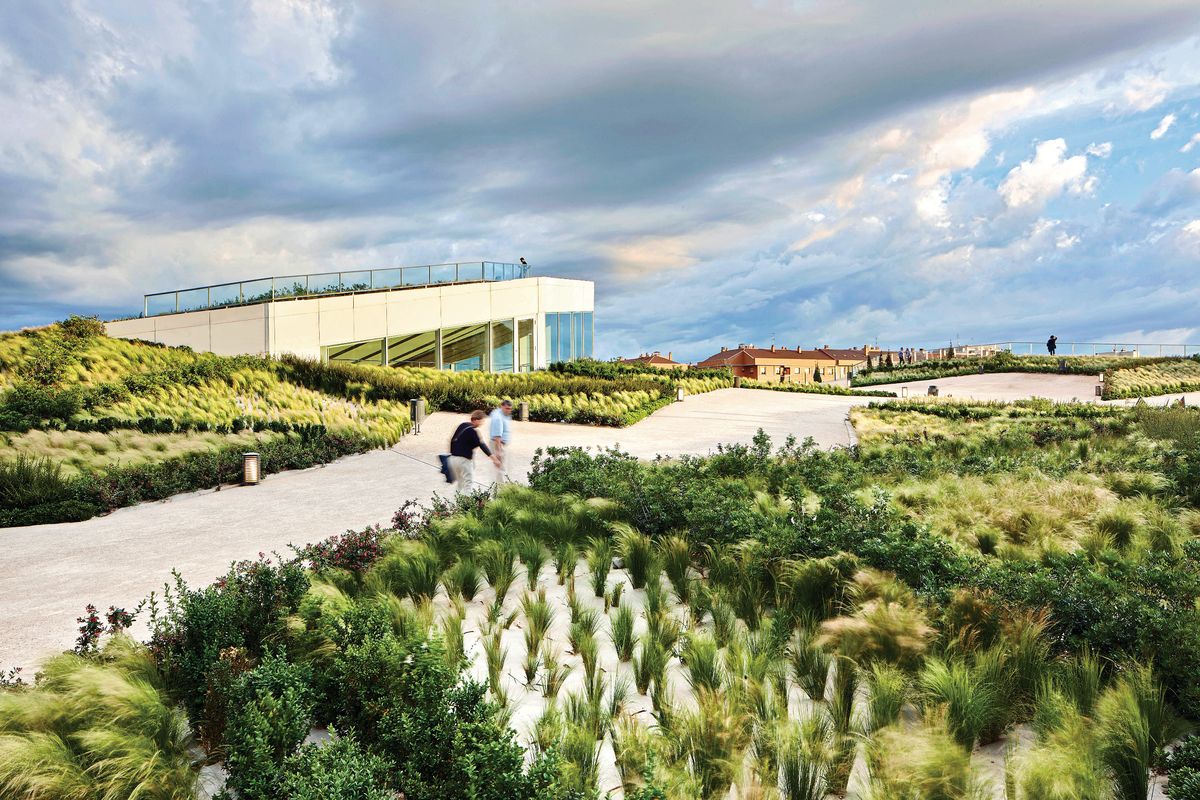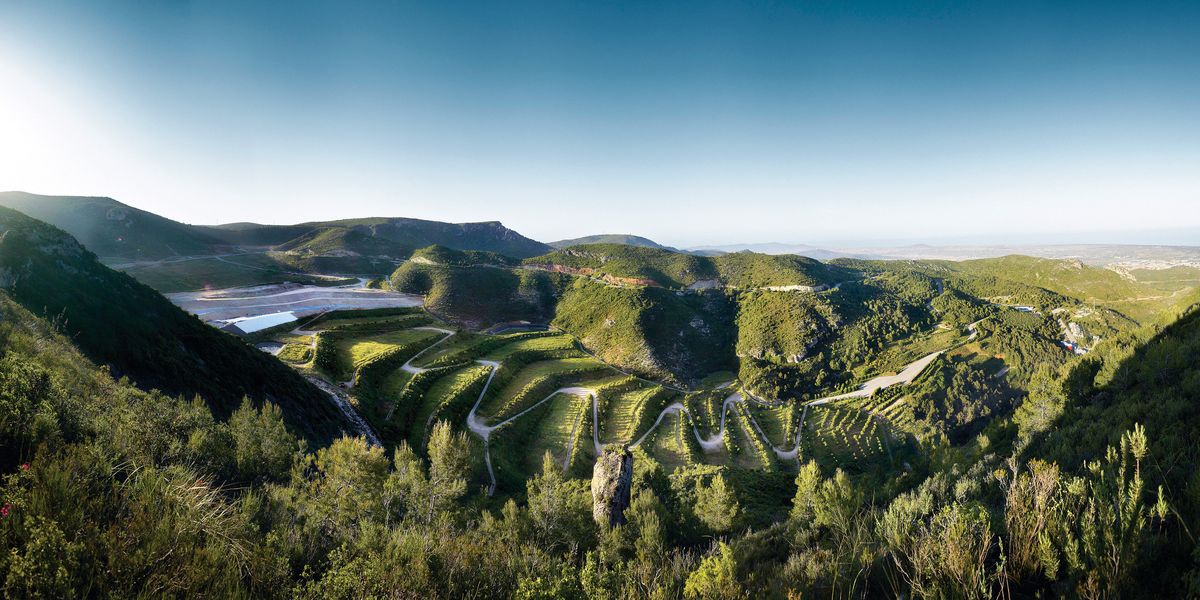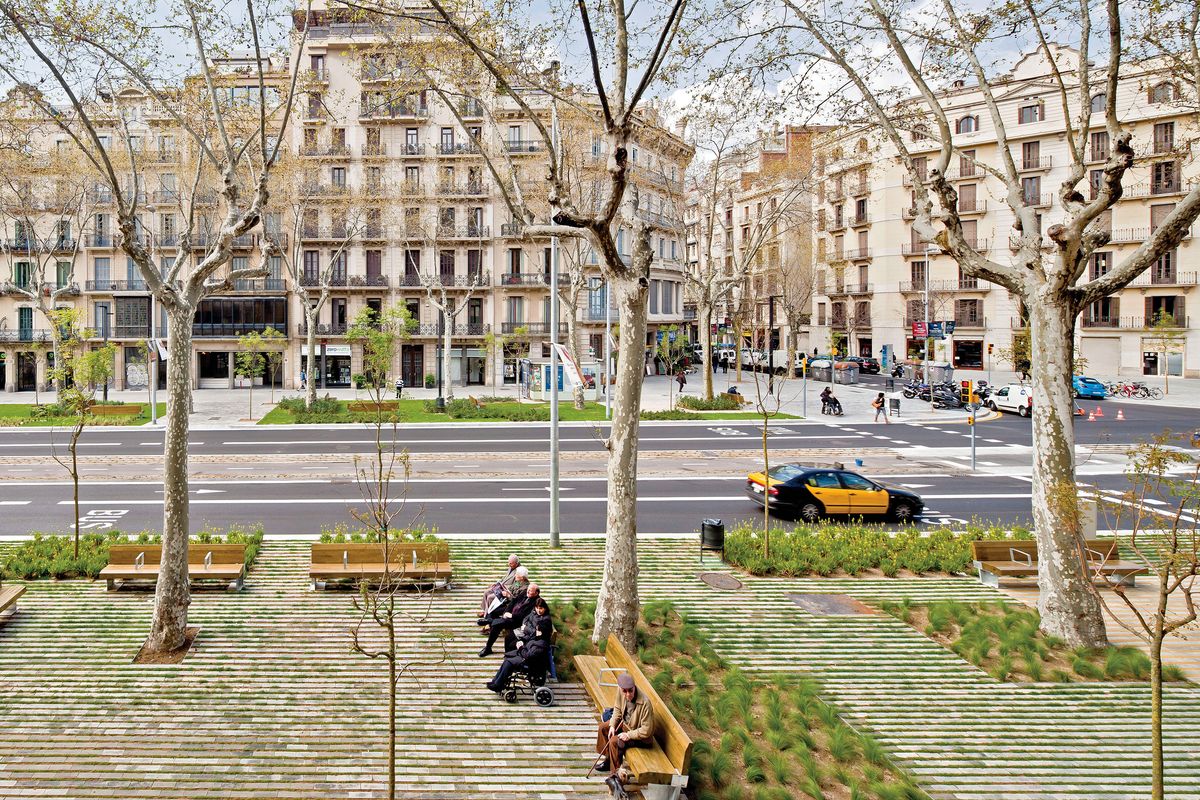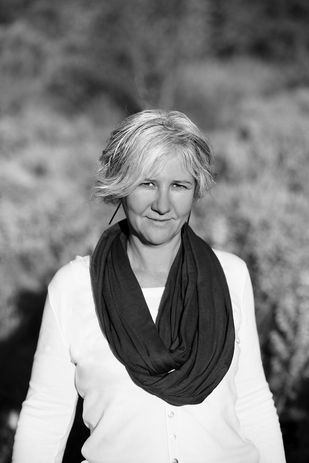
Teresa Gali-Izard, associate professor at the University of Virginia and principal of Arquitectura Agronomia
Image: courtesy of Teresa Gali-Izard
The work of Teresa Gali-Izard embraces the messiness of landscapes, allowing them to evolve over time according to environmental and managerial dynamics. Here, the verb “gardening” and its suggestion of a gradual tending to a place takes precedence over “landscape design.” The work of the designer is left simply to the establishment of a structure of choreographed interventions from which something resembling a landscape eventually emerges. Liam Mouritz spoke with Gali-Izard about design as maintenance and landscape across contexts.
Liam Mouritz: Your projects could be described as being generated out of conditions of scarcity, both in an environmental and economic sense. This idea seems very relevant to Australia, where we are often faced with a dry climate and less-fertile soils. However, I think we carry with us the baggage of our colonial past; an attraction toward the English picturesque and water-intensive landscapes.
Teresa Gali-Izard: In my opinion, there are many histories of landscape architecture. I come from the Mediterranean vernacular culture of landscape. This is a landscape system made up of terraces that can harvest the water and control the soil – is this landscape or is it landscape architecture? It is important to understand that my personal context has nothing to do with the Anglo-Saxon understanding of landscape. I think we need to start being a bit more precise in order to send the right message – that landscape architecture is not about the picturesque. In Thinking Through Landscape Augustin Berque talks about landscape as either a “gift,” or as a “product of labour.” I understand landscape as the latter. In the Mediterranean we are creative people, we lack resources, which forces us to build something from nothing. So, in each place, I try to visualize what the potential for such a place might be, even for places that have no soil or no water. Right now, I am interested in focusing on these kinds of landscapes.
Felipe VI Park, designed in collaboration with Ábalos and Sentkiewicz Architects, is a park on the rooftop of a train station in Logrono. The density of the shrub plantings increases relative to the slope gradient, acting as a form of erosion control.
Image: José Hevia
LM: Your work showcases roughness, which is refreshing when compared to many of today’s landscape projects. I suspect many contemporary landscape projects are designed specifically around how best to spread an image across social media. Can you share your own aesthetic approach?
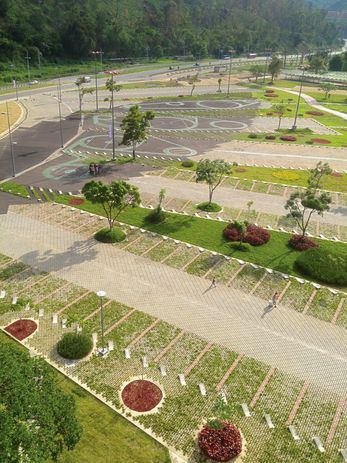
Parc de los primeros pasos in Caracas, Venezuela, designed in collaboration with Arup, RSHP and Carolina Acevedo and H é ctor Rangel from FPHC, is a parking lot transformed into a park.
Image: Carolina Acevedo and Héctor Rangel
TGI: My goal is to find a new kind of built environment and an aesthetic that is able to include the logic of living systems. I am obsessed with erasing the line. With breaking the line. With making everything continuous. The way that living systems work is not through [clear] lines but through a continuous transition. I am trying to break the traditional way that people see nature in cities. This can be a challenge with my clients. Each time I present a project, my client doesn’t understand what I am doing, they ask me, “Why don’t you talk about people?” Instead, I talk about roots, the conditions of the trees and the shrubs. Our office is the voice of the other in this built environment. And of course, this gives me a lot of trouble. Clients don’t want to know about this complexity in many cases.
Of course, I don’t want to be isolated from the world of landscape architecture, but I am critical of my peers in this regard. I hate the idea that we are using living creatures as objects. Often [such ideas] are the products of the images [that we produce]. So instead I [prefer to] draw the architecture of trees.
To convince clients of the value of living systems is a big challenge. Perhaps the solution is to have amazing gardeners. To redefine the figure of the gardener. I am very interested in management and maintenance. The problem with some projects is that there is no gardener. My entry for the Valencia Central Park competition presents my ideal scenario for this. This is a park that has no form. It has some rules that are related to maintenance and would be implemented by a group of gardeners. I would love to be the director of a park like this, to implement an adaptive management practice over a period of twenty years – managing all the machines and resources in a creative way.
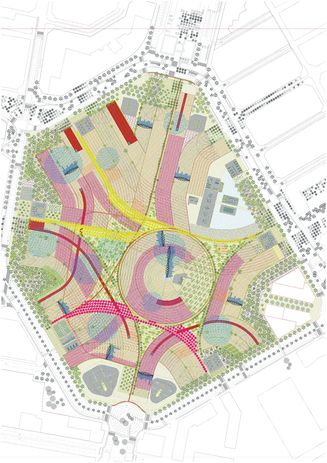
A formless park: Arquitectura Agronomia’s entry for the Valencia Central Park design competition, held in 2010, was conceived as a series of rules and relationships.
Image: Arquitectura Agronomia
My approach follows rule-based systems, which gives rise to many possible forms. I think that parametric systems of design are the next step in our field. Parametric design is for landscape architecture, not for architecture. It is not about the creation of form, but about relationships. It’s a diagram that helps us to balance and manage the resources or lack of resources. It’s like a game. I am more interested in designing games, relationships and management of resources than I am in designing places. This is the direction that I think landscape architecture should go. But this implies a totally new way of understanding the profession. It is far away from architecture and closer to ecology, resource management or agriculture.
LM: How do you see the role of collaboration in your work?
TGI: Collaboration can be very powerful if a real conversation is had. I think you need a leader who is generous, curious, will take risks and has an open vision. The problem with architects as project leaders is that often they will fix onto an image very quickly, which will stay there forever. We work in a totally different way. We give space to the logics of the living; the ecological dynamics and as a result, you never know where you are going to end up.
Working with architect Lola Domènech, Arquitectura Agronomia transformed a sidewalk in Barcelona with a permeable paving of concrete and grass.
Image: José Hevia
LM: Can you tell us about some of your influences?
TGI: Jacques Simon has been my mentor. He was a hyper-productive person, always drawing and coming up with ideas. He is not very well known, but has influenced many European landscape architects including Michel Corajoud and Alexandre Chemetoff. He was very provocative, working with farmers and students, playing with the snow and the wind. He was deeply involved in this very intense relationship with the living. He has been a big inspiration for me, but was much more of an artist whereas I am more of an engineer. I try to be a bit more rigorous, bring a bit more of a scientific approach to my projects. I have also been inspired by Francis Hallé, a French biologist. He has a book, In Praise of Plants, which features amazing drawings of plants.
Source
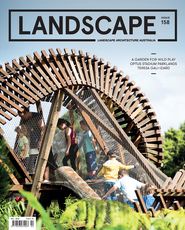
Practice
Published online: 31 Aug 2018
Words:
Liam Mouritz
Images:
Jordi Surroca,
José Hevia
Issue
Landscape Architecture Australia, May 2018

